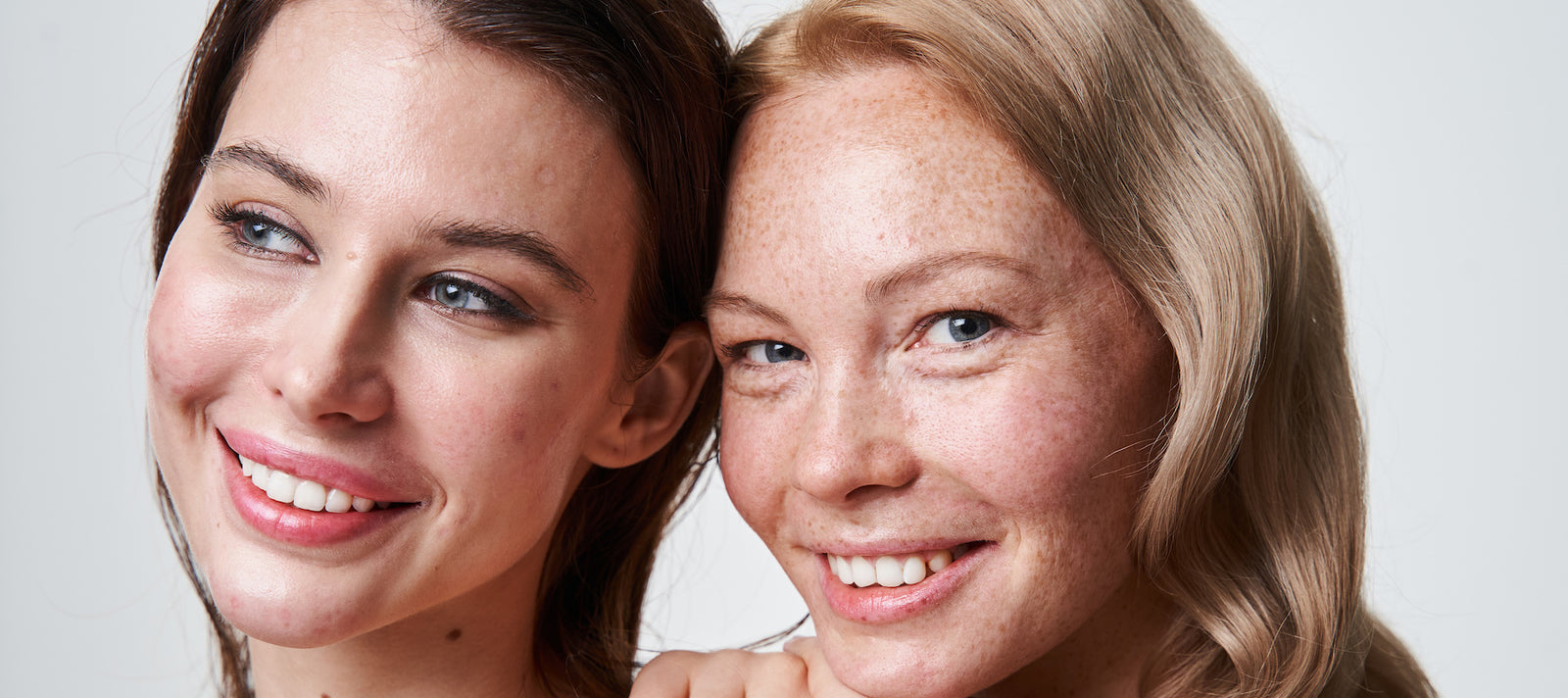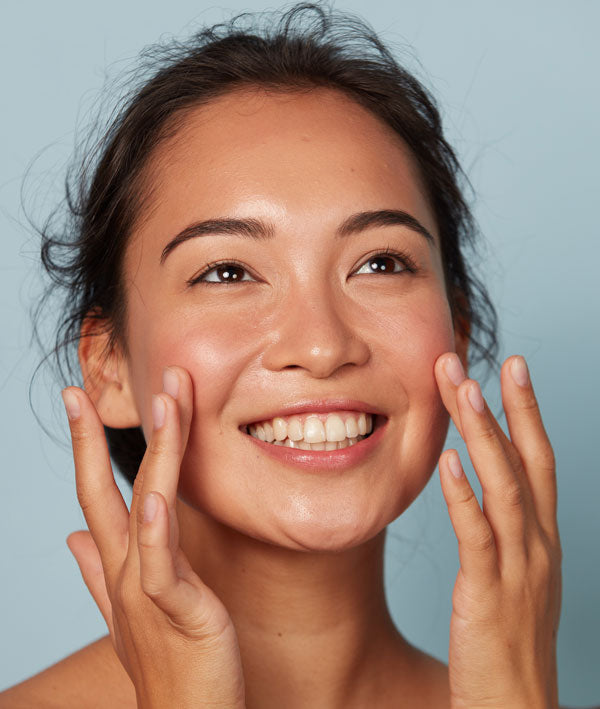Do you know your skin type? While you might have an inkling, many people aren’t 100% confident that theytrulyknow their skin. If you’re ready to identify your skin type once and for all, we’re breaking down the characteristics of each type, as well as how you can determine your skin type at home.
What Is My Skin Type? Characteristics To Look Out For
There are five main skin types, each of which has its own unique characteristics.
The specific requirements of these skin types may differ, but it’s important to note that there are some common needs that they all share. Everyone – regardless of skin type – should develop a foundational skincare routine with a cleanser, moisturizer, and sunscreen. These three products are essential for achieving and maintaining healthy skin. Once you determine your skin type, you can seek out formulas that are specifically made for your complexion’s needs. From there, you can also add serums that help balance your skin and target specific concerns, such as discoloration, dullness, or fine lines.
Without further ado, let’s talk about each of the five skin types.
Oily Skin
Everyone’s skin produces natural oil (known as sebum), but oily skin produces an excess. Those with oily skin will notice a higher than average amount of oil all over the face, but especially in the t-zone (the forehead, nose, and chin). Thanks to the extra sebum, this skin type is also particularly prone to clogged pores and blemishes.
The biggest misconception with oily skin is that you need to cleanse aggressively and use harsh treatments to get rid of all of that oil. However, doing so can do a lot more harm than good. By stripping your skin of its natural moisture, you can actually trigger it to produce even more oil to overcompensate. To get rid of excess oil without stripping the skin, look for a gentle foaming cleanser.
It may seem counterintuitive, but oily skin can greatly benefit from hydration, which will bring it into balance. Gel-based, non-comedogenic moisturizers are great for adding moisture to the skin without clogging pores. A lightweight hyaluronic acid serum (like the Hyaluronic Pure Boost Serum) can also be especially helpful, as it will provide moisture without feeling heavy on the skin.
Dry Skin
On the other end of the spectrum is dry skin, where the skin is producing far less oil than average. Those with dry skin may notice flaking, and may have skin that feels tight or parched throughout the day.
As you may have guessed, dry skin needs plenty of added moisture to keep it plump, soft and comfortable. Stick with a hydrating, non-foaming cleanser, as well as creamy moisturizers with ingredients like shea butter, ceramides, and oils.
Dry skin types can benefit from hydrating serums. They may also seek out serums to target specific skin concerns (such as signs of aging) that are also made with supporting hydrating ingredients. For example, the antioxidant-powered CoQ10 Boost Serum is made to firm the complexion and soften fine lines, and is also infused with hydrators that will bring moisture back to dry skin.
Normal Skin
Normal skin strikes the perfect balance between being oily and dry. It produces enough natural oil to feel balanced and not parched, but not so much that it easily gets shiny.
You may have normal skin, but that doesn’t mean you can’t benefit from adding serums to your foundational skincare routine. For example, if you want to brighten your complexion and both prevent and treat visible signs of aging, you can add a vitamin C serum to your daily routine.
Combination Skin
Combination skin is characterized by a complexion that experiences oiliness in the t-zone but dryness everywhere else. It’s not uncommon for people with this skin type to deal with breakouts in areas that are more prone to oiliness.
This is one of the more challenging skin types to deal with, since you’re battling two different concerns. Gel-based moisturizers can be beneficial for moisturizing without feeling too heavy on oilier areas of the face. Similarly, a lightweight hydrating serum is excellent for balancing moisture levels on all areas of the face.
Sensitive Skin
Sensitive skin is easily prone to redness, irritation and general discomfort. It can be a challenging skin type to manage, since it can be difficult to determine which ingredients may be aggravating the skin.
When it comes to caring for sensitive skin, gentle and calming formulas are best. Avoid common irritants, such as fragrances, dyes, sulfates, essential oils, and high concentrations of chemical exfoliants. It’s also important to only add one new product to your routine at a time, so that you can easily determine whether a certain formula is causing your skin to act up.
Identifying Your Skin Type At Home
There are a few different at-home tests you can try to determine your skin type. Here are our top three methods for identifying your skin type.
Method 1: Analyze After Washing
Wash your face with a gentle daily cleanser, and then wait for half an hour. Don’t put on any skincare products – just leave your face bare. Once the time is up, look at your face and see if you notice any of the key characteristics mentioned above. For example, if you’re noticing some shine coming through all over the face after 30 minutes, you probably have oily skin. Alternatively, if your skin is feeling tight and uncomfortable, you likely have dry skin.
Method 2: Analyze at the End of the Day
Another method is to analyze your skin at the end of the day, before you do an evening cleanse. This method works best on days when you aren’t wearing makeup. Look for the tell-tale signs mentioned above to determine your skin type.
Method 3: Do a Blotting Sheet Test
This method is great for determining whether you have dry, oily, combination, or normal skin – although it won’t help you identify sensitive skin. Take a few blotting sheets, and blot them on different areas of the face to see how much oil is absorbed to determine your type. For example, if there’s a good amount of oil on the sheet from your t-zone area but not from the cheeks, you likely have combination skin.
With this method, you’ll get the best results around the middle of the day or later. You won’t want to do this test right after cleansing, as you’ll clear away most of the oil on the skin.







